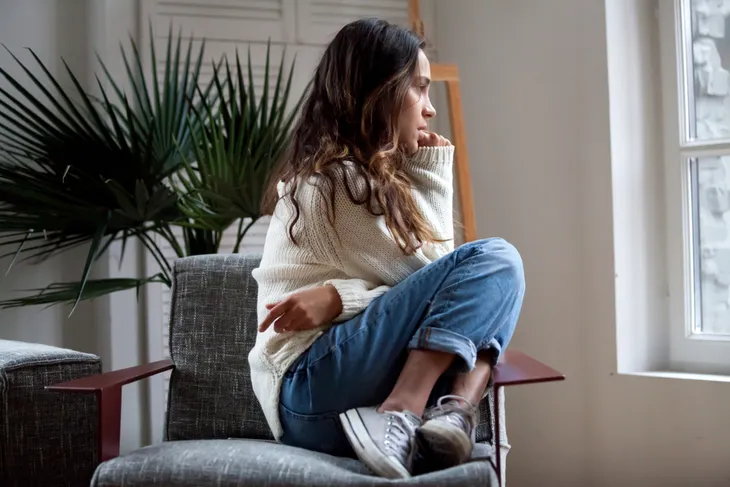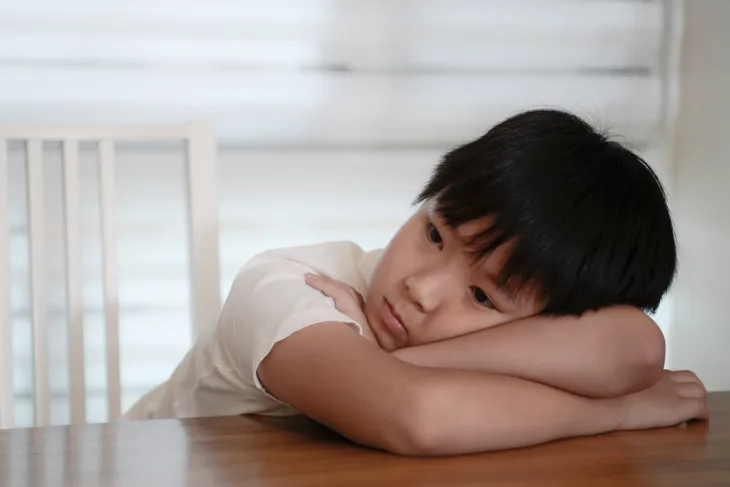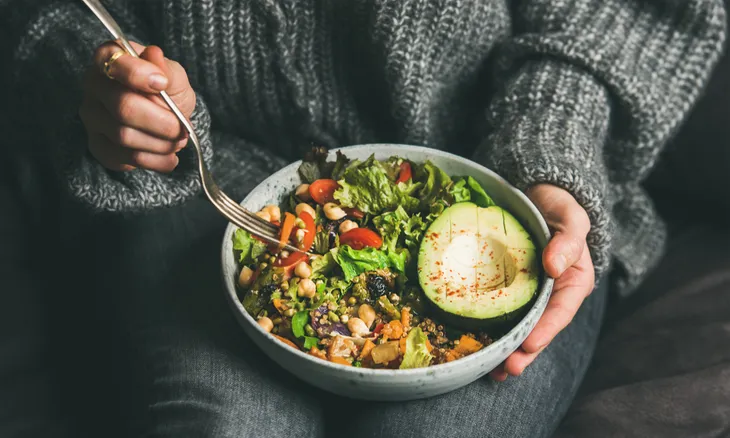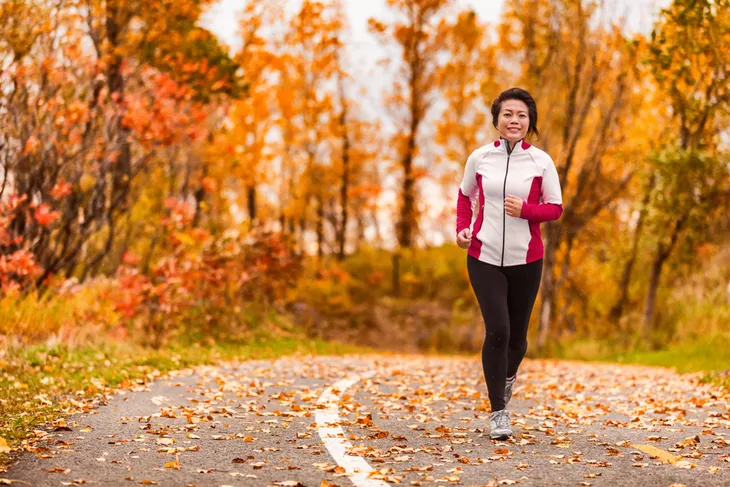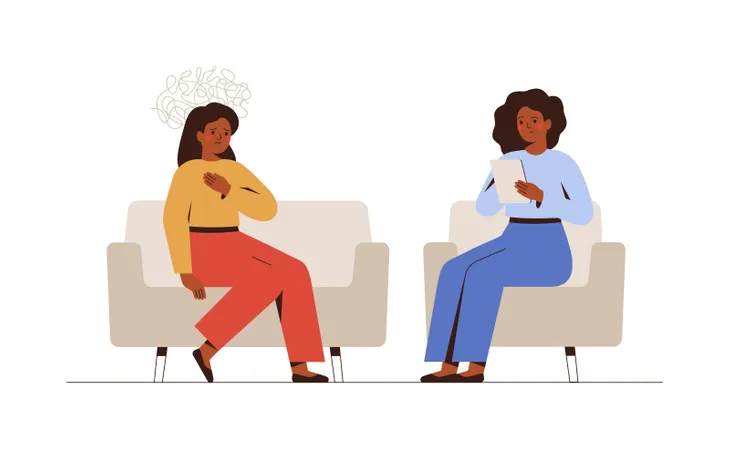- Autumn anxiety is a real thing that many people experience and it’s related to seasonal affective disorder (SAD).
- Autumn anxiety may be caused by a decrease in natural sunlight, the back-to-school season, and an anticipation of problems ahead.
- Luckily, there are simple ways to cope but sometimes professional help is needed.
Seasonal changes can be both beautiful and stressful, especially during fall. Many look forward to the back-to-school routine, crisp air, fall foliage, and fun fall activities, but it can also be anxiety-inducing for some. As it turns out, autumn anxiety is a real thing that many people experience.
If you experience anxiety, low mood, or irritability when fall arrives, you may have autumn anxiety. Here’s why fall can be particularly stressful for some people plus effective ways to cope through the season.
What Is Autumn Anxiety?
Anxiety often has an external trigger, such as social gatherings, excess stress, or trauma but sometimes there is no known trigger and this is common for autumn anxiety. Clare Morrison, medical advisor at MedExpress tells Healthline, “Unlike other anxiety, there often isn’t an obvious external trigger, and it tends to recur annually.”
Even though there are many exciting events that occur during fall, there are also some that can cause stress, especially in individuals who are prone to anxiety. Luckily, there are steps you can take to help prevent it.
Common Symptoms of Autumn Anxiety
So, how do you know if you have autumn anxiety? For starters, autumn anxiety may cause physical symptoms like disturbances in sleeping patterns, low mood, depression, excessive worry, and anxiety. You may also become irritable, feel fatigued, or lose interest in daily activities.
The Healthy, says these are key symptoms of seasonal affective disorder (SAD) which can happen in both fall and winter months. “Many people recognize SAD as a cause for depression, but they may not realize that it also encompasses anxiety symptoms,” Kimberly Asner-Self, a licensed professional counselor, program director, and associate professor in clinical mental health counseling at Touro College’s School of Health Sciences in New York tells the source.
What Causes Autumn Anxiety?
You might be wondering why some people experience autumn anxiety while others do not. The Healthy explains that it comes down to two factors. The first is physical changes that affect the brain chemicals and the other is environmental changes that affect your day-to-day life. Let’s take a closer look at the environmental and physical triggers next!
Environmental Changes
Though autumn can be pretty, there are environmental changes that may bring on anxiety for some people. For starters, the days have longer hours of darkness which can take a toll on your mental health in itself.
It’s also common to develop stress and anxiety just anticipating problems ahead of the season, such as the worries that come with winter and the end of the year. The anticipation of family events like holidays can also be anxiety-provoking for some. The Healthy also notes that feeling both excited and anxious about the season can lead to more anxiety.
Back to School
The back-to-school season can be another trigger for autumn anxiety. This is a transitional time of year for both parents and children which can be exciting for some, and stressful and anxiety-inducing for others.
School can cause anxiety in children for a number of reasons. For starters, it means separation from parents or caregivers. It can also be stressful when they enter a transition year, such as starting kindergarten, middle school, high school, or after moving entirely. The thought of a new classroom and adjusting to a new teacher can be stressful too.
The Child Mind Institute explains that the season can also be anxiety-inducing for parents, as they need to reinstate routines and arrange new activities and schedules. The source says it’s important to take your own temperature and make sure you’re not passing your stress on to your children.
Physical Changes
During autumn, the body can go through physical changes too. The Healthy explains that when daylight decreases, a chemical change is triggered in the brain for some people. Asner-Self tells the source that there is some evidence that suggests “in the Northern hemisphere during fall, as the Earth tilts away from the sun, our moods are affected.” So, how is the brain affected exactly?
The source says less daylight can lead to lower levels of serotonin, norepinephrine, and dopamine (known as neurotransmitters), which all control your emotions. Low levels of these neurotransmitters can lead to an increase in cortisol (known as the stress hormone), which can lead to anxiety. These changes in the brain can also lead to physical symptoms like sleep disturbances, feelings of depression, and anxiety.
How to Cope With Autumn Anxiety
Whether your autumn anxiety is caused by a decrease in sunlight, the back-to-school season, or simply the anticipation of what lies ahead for the rest of the year, there are ways to cope.
For starters, you may need to increase your vitamin D intake or adjust your diet. Adding exercise to your daily routine and changing your mindset can also help you cope. In some cases, professional help may be needed. Let’s take a more detailed look at these coping strategies next.
Increase Light Exposure
Even though daylight decreases in the fall, Healthline suggests “spending more time outdoors to make the most of what sunlight there is.” One way you can do this is by taking a walk in the morning sunshine. It may also be beneficial to go to bed earlier to help improve daytime sleepiness.
Another effective way to increase light exposure is to use a light therapy box. This device mimics outdoor light which can help boost your mood and ease your symptoms. According to the Mayo Clinic typical recommendations include using the light box within the first hour of waking up for 20- to 30-minutes. The light should usually be placed 16- to 24-inches from your face but follow the manufacturer’s instructions. Keep your eyes open but don’t look directly at the light.
Vitamin D
A decrease in light exposure may also lead to a vitamin D deficiency. According to WebMD, common signs of a vitamin D deficiency include mood changes accompanied by sadness and hopelessness, fatigue, anxiety, trouble sleeping, and loss of interest in daily activities. If you think you may have a vitamin D deficiency, contact your doctor to have your levels checked, which can be checked with a blood test.
The source says some of the best ways to increase your vitamin D intake is by increasing your exposure to the sun. But since sunlight decreases in the fall, the next best thing is to increase your intake of foods fortified with vitamin D or by taking vitamin D supplements.
 Shutterstock/New Africa
Shutterstock/New AfricaAdjust Your Diet
What you eat can also play a role in how you feel, which is why you should consider adjusting your diet to help combat autumn anxiety. According to the Cleveland Clinic, research shows that certain foods can affect the “mood-modifying” neurotransmitters.
Foods you should include in your autumn diet include lean proteins, fatty fish, dark leafy greens, fermented foods, nuts, fruit, and whole grains. The source also notes that dark chocolate “with at least 70% cocoa solids release endorphins that improve mood.”
Exercise Regularly
It’s no secret that exercise is important for your health, especially as you age, but it turns out, regular exercise may help ease anxiety too. According to the Mayo Clinic, exercise may benefit anxiety by releasing feel-good endorphins which are brain chemicals that improve your sense of well-being.
Regular exercise may also help ease anxiety because it can help take your mind off your worries. Healthline also suggests taking advantage of the cooler weather to enjoy more activity outside, such as going for long walks or bike rides.
Change Your Mindset
Healthline says another effective way to cope with autumn anxiety is to change your mindset. Instead of associating the season with negative experiences, try to reframe your thought process.
For example, if you think about being stuck inside because of the colder weather, the source suggests trying to think of being inside as cozy and comfortable. You can even update your environment to correspond with your thoughts such as updating your throw cushions to autumn colors, lighting a candle, or getting cozy with a warm blanket.
How to Ease Back-to-School Anxiety
According to Johns Hopkins Medicine, there are simple steps you can take to help ease back-to-school anxiety. For starters, begin preparing for the transition a week or two before school starts. You can do this by resuming your regular routine, like going to bed at a reasonable time and waking up at the same time for school.
The source also suggests arranging playdates with familiar friends from their school. It might also help to visit the school a few times before the school year starts. You could practice walking to school and drop off or spend time playing at the playground in the schoolyard. The source also notes that it’s important to validate their worries.
Get Professional Help
In some cases, professional help may be needed. One form of professional help is cognitive behavioral therapy (CBT). Healthline explains that CBT is a form of talk therapy that aims to modify thought patterns to help change moods and behaviors. Prescription medication may also be necessary to help ease symptoms.
Professional help isn’t only meant for adults. Johns Hopkins Medicine notes that if your child is still showing signs of distress after a month of school or if their symptoms are worsening, it may be time to seek evaluation from a psychiatrist or psychologist. Like adults, CBT can also be beneficial for children and can help them address and confront their anxiety.
Don’t be afraid to reach out for help for you or your child and don’t wait either. If autumn anxiety is interfering with your daily life, it’s time to talk to your doctor.

